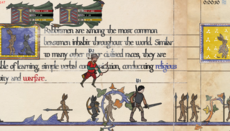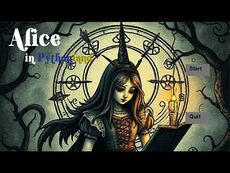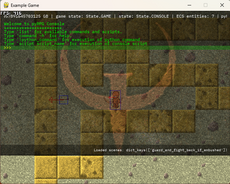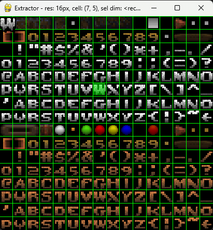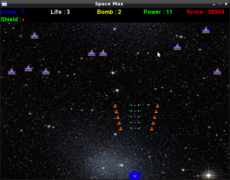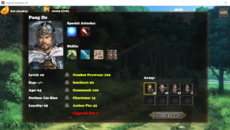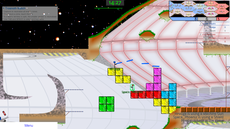CommandDispatch — wiki
The Command Dispatch pattern is helpful when implementing GUI frameworks for your game.
Widgets are derived from the Node class, and implement event handlers, which are methods which are the event names, and have a prefix of 'EVT_'. Eg a Button class would typically implement a EVT_MouseButtonDown method which is called when a 'MouseButtonDown' event is posted to the Root node, and the Button node has the focus.
If the Button node received other events, and did not have handlers for those events, the event is passed up to the parent node.
An event handler method can explicitly pass the event onto the parent by calling self.dispatch_to_parent(event).
The end result of using the command dispatch pattern is a heirarchy of widgets, of which only one can have focus at a time, and which respond to events.
Leaf objects can be added into the widget tree to any node. A leaf node would typically be used to implement dynamic widget behaviours, and not overide the main widget event handlers. Eg, tooltips and hover effects would be created using leaf objects.
class Event(object):
def __init__(self, name, kw={}):
self.name = name
self.__dict__.update(kw)
self.dict = dict(kw)
self.method_name = 'EVT_%s' % self.name
def __repr__(self):
return "<event>" % (self.name, self.dict)
class Dispatcher(object):
def add(self, other):
if isinstance(other, Dispatcher):
other.parent = self
else:
raise ValueError("%s is not a Dispatcher" % other)
def remove(self, other):
if isinstance(other, Dispatcher):
if other.parent is self:
del other.parent
else:
raise ValueError("%s is not my child." % other)
else:
raise ValueError("%s is not a Dispatcher" % other)
def dispatch(self, event):
method = getattr(self, event.method_name, None)
if method is not None:
return method(event)
else:
self.dispatch_to_parent(event)
def dispatch_to_parent(self, event):
parent = getattr(self, 'parent', None)
if parent is not None:
dispatch = getattr(parent, 'dispatch', None)
if dispatch is not None:
return dispatch(event)
class Root(Dispatcher):
def __init__(self):
Dispatcher.__init__(self)
self.focused_node = self
def focus(self, node):
if node is self.focused_node: return
print 'focusing on', node
self.focused_node.dispatch(Event('BLUR'))
self.focused_node = node
node.dispatch(Event('FOCUS'))
def blur(self, node):
self.focused_node = self
node.dispatch(Event('BLUR'))
def post(self, event_name, kw):
event = Event(event_name, kw)
return self.focused_node.dispatch(event)
if __name__ == "__main__":
class Button(Dispatcher):
def EVT_KeyDown(self, event):
return self
#create the root node, which is the reciever of all events.
r = Root()
#create a button node
b = Button()
#add the button node to the application
r.add(b)
#give the button node focus, it will now receive events
r.focus(b)
#post a KeyDown event, which the button will recieve
print r.post('KeyDown')
#post a Quit event, which the button will not receive.
#this event will be passed onto the button parent
print r.post('Quit')
#the return value of the post method is the node which handled the event
</event>
